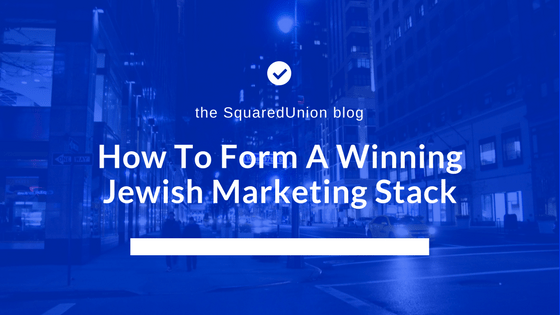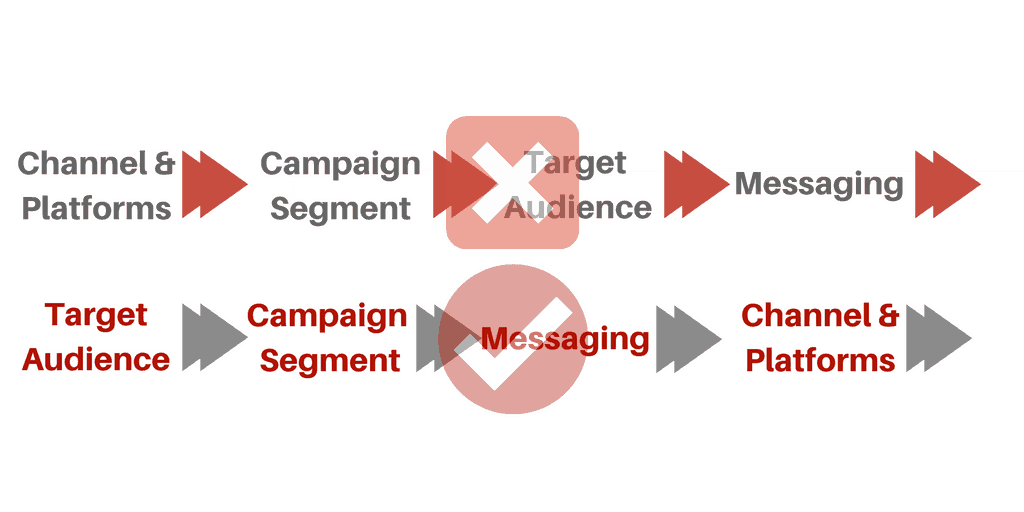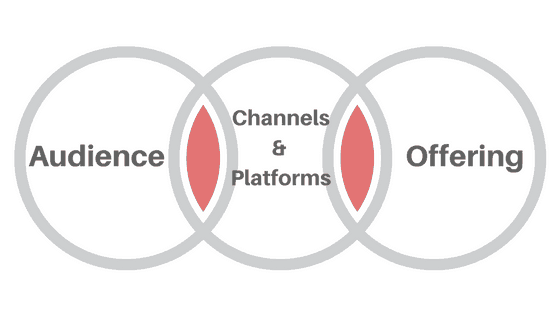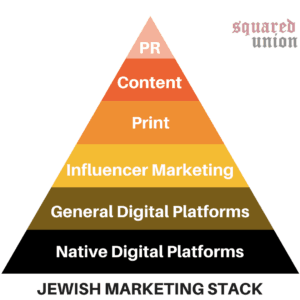One of the primary challenges when it comes to Jewish centric marketing campaigns is forming of the proper marketing stack. A “marketing stack” can be best described as the platforms leveraged to conduct marketing activity and reach campaign goals. We have found that prior to our work with clients, one of the biggest issues they experience is confidently choosing which, and how many platforms to utilize in their marketing efforts.
Creating the right marketing stack can be quite difficult due to the plethora of marketing platforms and options available. This confusion is further exacerbated by an understanding that is oftentimes lacking in terms of both the strengths and weaknesses that are native to each platform. Therefore, in order to best understand which group of marketing platforms will be most beneficial for reaching specific campaign goals, it is important to have an intimate understanding of available marketing platforms. In addition, while usually less of a challenge, knowing the nature of your proposed offering and how it relates to strategy also plays an important role in whether or not the proper marketing stack is chosen.
Campaign Goals & The Nature Of Your Offer
Understanding your offering is vital for multiple reasons, but in terms of choosing a marketing stack, this importance is magnified substantially. That is because the composition of your initial marketing stack varies substantially depending on what is being offered and what campaign goals are. For example, a campaign with the goal of raising awareness will have a different marketing strategy than a campaign focused on direct sales. Likewise, an offering that is digital in nature will often times differ in terms of optimal marketing stack composition when compared with an offering focused on a physical product. With that being said, even with two offerings that are complete opposites, there is often some overlap in utilization of certain platforms. This is due to many platforms having versatile capabilities that are utilitarian for a wide range of offerings.
Audience & Stages Of Consideration
One of the most substantial differentiating aspects of your offering that should arise when composing a marketing stack revolves around who the optimal audience is and subsequently what the stages of consideration for conversion are. As within any marketing context, Jewish centric marketing campaigns present a pretty broad array of potential Jewish sub-audiences included within the broader and comprehensive “Jewish audience.” As we have discussed quite extensively in past discussions, Jewish audiences can and should be segmented along a number of different data points.
Even after audience segmentation has been accomplished, whether the offering is B2C or B2B should further guide your efforts in creating an optimal marketing stack. For example, a traditional B2C product offering generally entails a much shorter buying process. In contrast, B2B offerings are usually composed of various different stages of consideration ranging from research and comparison to eventual purchase.
As you delve into who your optimal audience is and what the stages of consideration look like, the direction of your marketing stack begins to take form. It is important to remember though, the nature of your offering is only one side of a double sided coin. The other side, which is equally, if not more important, is having an understanding of the platforms you can utilize that will help reach your marketing goals in the most effective and efficient manner.
An Important Distinction: Platform vs. Channel
In any discussion revolving around multicultural and population specific marketing campaigns, we find it important to make the basic distinction between the terms “platform and channel.” Marketing platforms are those tools that make up broader channels. For example, social media as a marketing channel is composed of various different platforms, such as Facebook, LinkedIn, & Twitter. In a Jewish marketing context, this is an important distinction to make because while two platforms or channels may seem similar on their face, one may be able to accomplish campaign goals while the other cannot. The primary reason for this is based on the unique nuances that accompany each specific Jewish segment you are trying to reach and furthermore, how they interact with a wide variety of platforms.
General Platforms vs. Native Platforms
Another important distinction when discussing the composition of the Jewish marketing stack is that of general platforms and native platforms. General platforms refer to marketing tools that can be effectively utilized in both a Jewish marketing context as well as other scenarios. An example would be AdWords and Facebook. On the other hand, native platforms refer to marketing tools that specifically reach a Jewish segment. Examples of native advertising would be influencer marketing or an ad network that allows for targeting of websites with a Jewish centered focus. As with almost anything in marketing, the performance of general platforms when compared to native platforms varies greatly depending on the nature of the offering as well as the nature of campaign goals.
A Brief Overview Of Primary Platforms & Channels
While the primary platform types listed below make up much of any Jewish marketing stack, there are additional platforms and channels on the periphery that have limited but strong performance potential in select use cases. In addition, within the classifications listed, there are numerous platforms included in each type. The first step is to understand which platform classification(s) hold the strongest potential and then choose the specific platforms from within that classification based on both the nature of your offering and the capabilities of the specified platform.
PPC
With so many different use cases, pay-per-click advertising is relevant for offerings that range across the spectrum. With powerful targeting capabilities and robust performance tracking, PPC is a powerful tool when it comes to Jewish marketing campaigns. While there are the well known general PPC platforms such as Facebook and Google’s AdWords, there are also PPC platforms which are native to reaching a Jewish audience. Success in reaching goals with PPC campaigns rests in large part on a strong targeting and tracking strategy combined with constant and ongoing campaign optimization.
Digital
While digital marketing channels include a large swath of platforms and sub-channels, there are a number of primary types. These include banner advertising, email marketing, and social media. As with all marketing activity, the performance and use case for each specific platform varies depending on the nuances of the campaign and offering in question. When embarking on digital advertising for a Jewish marketing campaign it can be quite overwhelming to be confronted with the wealth of options available. It is therefore important to have an experienced approach that allows for effective elimination of platforms that are either irrelevant or not worth the investment.
Print
In the world of marketing, we are constantly hearing that “print is dead.” While there is certainly much truth to this statement, there are still high potential use cases for print based advertising. This is especially true when it comes to Jewish centric advertising. This is in part because of the reach that print publications have in many of the larger Jewish communities. In addition, print affords the opportunity for native content promotion that can sometimes outperform similar content published on an online platform. Lastly, print is one of the last bastions where cost can be substantially negotiated for more effective ad spend.
PR
Public relations and related marketing activity has gained somewhat of a questionable reputation. Much of this comes from the ambiguous nature of the work as well as for its relative lack of capability for performance tracking. At the same time, with new tools for tracking and an increase in PR opportunities, we are seeing both a resurgence of client demand as well as with associated performance.
Much of this success lies in the native nature of much of our PR work as well as the relationships we have fostered with various publications and platforms. This often results in a reduced spend when compared to comparable impressions and conversions gained from paid media. In addition, PR campaigns often set the stage for increased brand loyalty and the opportunity for continued and future media partnerships. We find that the winning angle is when there is a mutually beneficial relationship between publicity afforded to the offering at hand as well as valuable and interesting content for the consumer base of the publication or platform. This is accomplished by ensuring for relevant and engaging material that is in line with the theme of what the specific publication or platform usually offers. It is therefore of increased importance that the most relevant platform/publication is chosen for any PR activity.
Influencer Campaigns
Increasingly the hot topic in marketing, influencer marketing and related campaigns are fast becoming an integral part of the Jewish marketing stack. The main draws of influencer campaigns are twofold. First, they have very loyal and engaged followings that interact with them on a constant basis. Second, but related, influencers have a relationship with their followers that allows for promotion in a very organic manner. Fans feel as though the influencer would only recommend something they truly enjoy and are therefore more inclined to take influencers recommendations to heart. This is in part why influencers try to ensure that they do not stray too far from their brand by promoting offerings that are not in line with their core following.
Influencers relevant to the Jewish consumer are a burgeoning yet fast changing marketing landscape. When choosing influencers for your Jewish marketing campaign, your primary concern should be whether the influencers following is relevant to your offering. This requires both an understanding of the influencer landscape and as discussed prior, an understanding of how your offering will interact with a given influencers fan base.
Out Of Home
When discussing out of home advertising, most of us instinctively jump to billboards and other traditional outdoor advertising choices. The truth of the matter is that “out of home” advertising, especially when it comes to Jewish marketing, includes so much more. From smaller and cheaper billboard style ads like bus stop shelters and phone booths to guerilla marketing of posters and signs, outdoor advertising holds strong potential in numerous use cases.
The Age Of Performance Tracking
Increasingly, tracking of campaign performance and ad spend activity is fast becoming the new normal. And for good reason, tracking allows for both optimization of marketing stack composition as well as for accountability in terms of ROI. A potential challenge that arises from this preference for tracking of all campaign aspects is the elimination of marketing platforms that are not as easily tracked. This can at times sideline a platform that can produce powerful yet not easily trackable results. While this was more of an issue in years past, solutions such as vanity URL’s and platform specific referral parameters allow for tracking of even these once untrackable platforms.
Multichannel & Multiplatform Are Your Friends
When forming practically any Jewish marketing stack it is important to ensure for a diverse composition of varying channels and platforms. This is because different segments of the Jewish audience have specific platforms that are most effective in reaching that segment. In addition, it allows for spend to be diversified, as opposed to being concentrated in one basket. The dangers of concentrated spend are numerous but most significant is the potential for choosing the wrong platform and not having the resources to try platforms that will make up for the loss.
Initial Jewish Marketing Stack Varies From Subsequent Stacks
Choosing the best initial marketing stack is very important, but that doesn’t mean that the initial marketing stack remains stagnant. Quite the contrary, a stationary marketing stack is a big mistake and is a sign of a campaign that is not performing at full potential. While it is quite easy when seeing great results from your initial marketing stack to keep things the same, if you want to ensure that you are getting maximum return on your campaign spend, it is important to measure and analyze initial performance. It is also important to optimize your marketing stack on a continuing basis. Increasing resources and spend on platforms that are performing well and eliminating those that are underperforming should be a key component of your ongoing optimization efforts. In addition, adding new marketing platforms in moderation that hold potential, will ensure that your campaigns do not suffer from complacency and that you capitalize on any opportunities present.
A Marathon, Not A Sprint
While the length of Jewish marketing campaigns vary, with some being short and others taking place over the longer term, in general, a steady and strategic approach is necessary for optimal success. This does not necessarily mean that campaigns cannot be short lived yet effective. Rather, the key takeaway is that in order to meet campaign goals within allotted timeframes, a well thought out, foundational strategy is necessary. A substantial part of any strong strategy is a wholesome Jewish marketing stack that takes into account the nature of your offering and its optimal Jewish audience.




